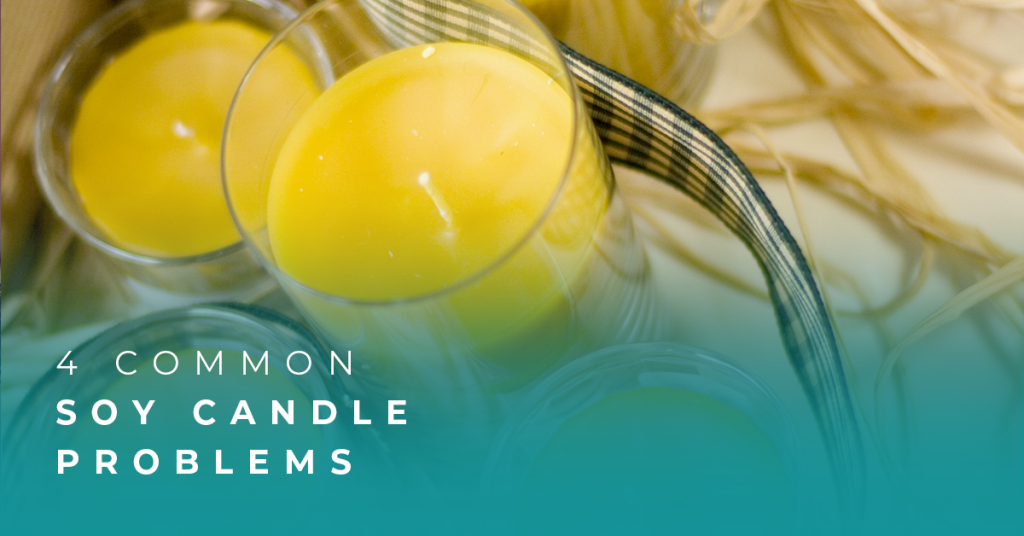
I don’t care about spots on my apples
Leave me the birds and the bees
Please!Joni Mitchell, Big Yellow Taxi lyric excerpt
In candle making we are all striving to make “perfect” candles and here at Candle Creations we have all the ingredients, equipment and knowledge you will need in your pursuit of perfection. Before we look at the four most frustrating problems in candle making it is important to remember that we are dealing with mostly natural ingredients, and mother nature sometimes gives us a hard time.
Here’s a list of some of the common frustrations in soy candle making and how to try and reduce them. Most of them can be managed by making use of your thermometer and by adjusting ratios of ingredients….keep good notes. Have fun and try not to get too frustrated, every candle has its own personality…and by keeping our ingredients as natural as possible we’re doing our bit for the birds and the bees.
1. Lumpy Tops
In the majority of cases a lumpy top on a soy candle is the result of incorrect pour temperature (see pic below for an extreme case). Many people do not place enough importance on pour temperature, some not even using a thermometer.
If you want a great looking soy candle with smooth tops and good glass adhesion, investing in a good quality thermometer is a must.
A lot of people are caught by surprise when after a couple of months of pouring their candles at a certain temperature, the next pour develops lumpy tops yet they have changed nothing. You may not have changed anything but the weather (mother nature) will certainly have changed with the seasons.
The seasonality, humidity, and your ambient temperature of the room you are pouring in all play a big part in how your candle sets. You may use air conditioning in summer and a heater in winter. This will all affect your candles.
Lumpy tops can usually be eliminated by increasing the pour temperature in increments until the problem disappears. The recommended pour temperature is a starting point only and your own fine tuning is usually required. Keep good notes.
Fragrance oils can also cause holes and lumpy tops. Fragrances like vanillas and some florals such as lavenders and geranium are notorious for ‘curdling’ the top of soy candles. This can be overcome by ensuring that your oils are mixed well with the wax and at the correct “add fragrance” temperature. Also a pour temperature adjustment may be required to suit each different oil. If this does not work you may have to adjust the amount of Fragrance Oil (fragrance load). Always use a quality fragrance oil that has been developed for use in candles.
The ‘cheats’ way of getting rid of a lumpy top: Use a blow-dryer to gently remelt the top few millimeters and then let set. If you keep getting lumpy tops try the “top pour” method; this is where you leave some room in the candle jar to go back when it is set and pour a few mm of melted wax on top….just be sure it is the same blend as the main pour.
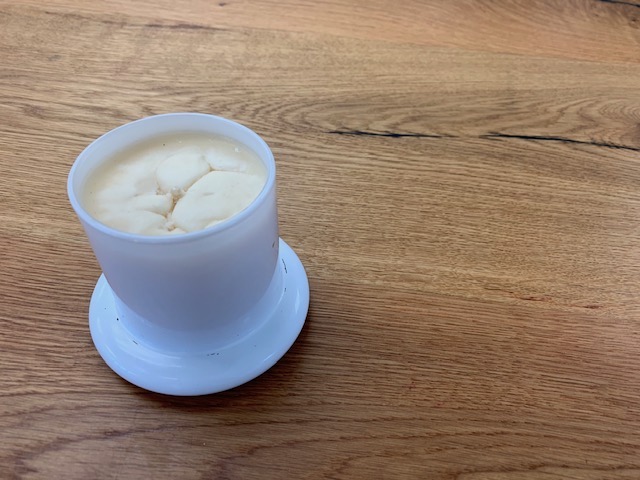
2. Wet Spots
A wet spot refers to the patch on your glass that almost looks like there is an air or water bubble between the wax and glass.
What in fact has happened is the wax has pulled away from the edge of the glass. Chandlers are all striving for perfect glass adhesion and this is one of the most frustrating problems to solve. It does not affect the performance of the candle in anyway but is an aesthetic thing.
It generally happens when the candle temperature fluctuates and the wax expands and contracts. You will find it very nearly happens always overnight if you leave your candles out when the weather is cooler.
It can be controlled by using a good quality soy wax that is made for container candles, but also by managing temperature. Also, the quality of your glassware plays a big role in this. Our clear glassware is all sourced to meet the demands of superior glass adhesion.
If you find your candle wetspots as it is drying, try increasing the pour temperature slightly so that it can cool more slowly. If your candle wetspots overnight, make sure you put the candles in a warm place & don’t leave them exposed to the cold. Let the candle cool and set slowly…never in a fridge! Another trick is to warm your jars slightly, in the sun or a warm oven, so that the hot wax is not hitting a cold jar…brrrrr.
Sometimes however no matter what you do you will not prevent wetspots. The climate changes both outside and inside, even during transportation or the air-conditioning in a shop can all cause wetspots to form and even disappear.
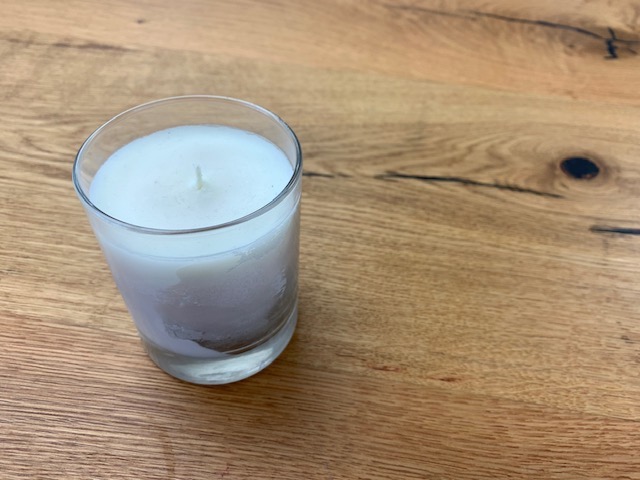
3. Frosting
This is the common term for “polymorphism” and describes the white coating that appears on your soy candles. What causes it? Frosting is a perfectly natural effect of using soy wax and is unique to vegetable waxes, especially soy. It is the natural wax re-crystallizing.
All soy waxes frost to some degree and is a sign that you are using 100% natural soy wax. It is more noticeable with coloured candles.
Some soy waxes have additives to help prevent frosting however if you want a 100% natural product then expect some frosting sooner or later. Frosting does not affect the performance of your candle and is something that you shouldn’t stress over.
You can minimize frosting with these simple tips.
* Play around with your pour temperature, adjusting the temperature in small increments and keep note of the results.
* Keep your candles warm overnight. Don’t leave them out especially when you know the temperature is going to drop. This is certain to promote frosting. Soy likes stable temperatures and can only cope with gradual changes.
* Frosting will also occur with age so it is best to use your soy wax flakes within one year of manufacture (unless stored appropriately for extended storage) and consume your candles within six months of making them.
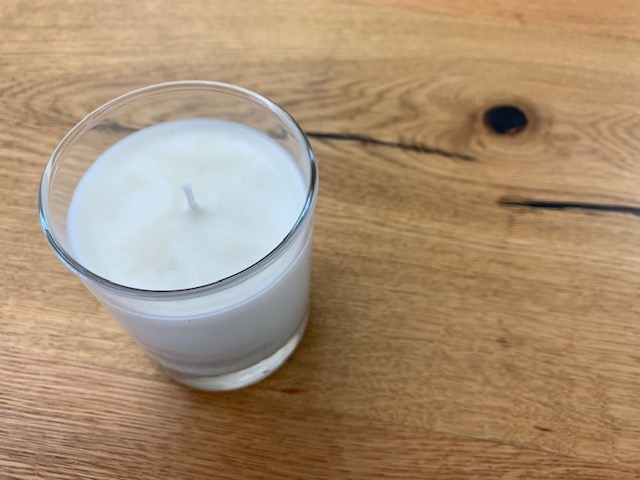
4. Hollowing or Sinking
This usually occurs when the pour temperature is too low. If the candles are cooling too quickly the wax on top dries while the underneath is still quite warm. This causes the wax to suck down on itself as it continues to dry.
To remedy, increase the pour temperature incrementally and make sure the wax is allowed to cool slowly and evenly. Also worth considering the environment in which you are making your candles, is it too cool or drafty, is there a heat pump nearby? Always strive for a stable ambient room temperature of 21°C.
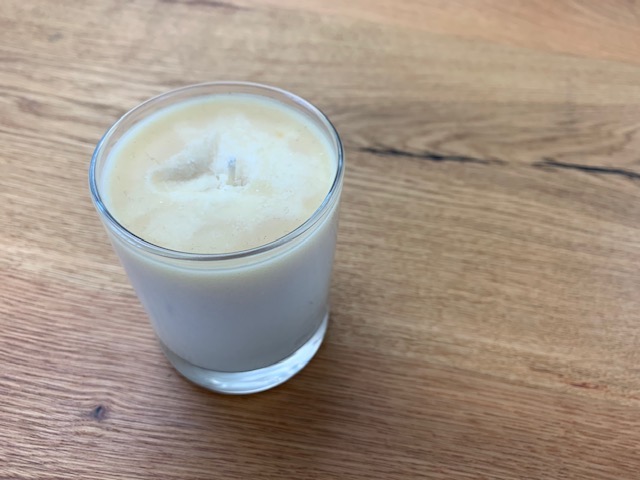
A final word to the wise
These tips will help you to become a better Chandler but sometimes you will be frustrated no matter what. But I would rather a spot on my apple than one that has been genetically modified and spayed with chemicals, wouldn’t you?
As Chandlers we often stress when our candle has a wet spot or a slight imperfection in the top. The good news, if you are making candles for sale, your customers aren’t stressing about these things….they mostly want a candle that smells great, burns well, is safe, and lasts the distance.
Manage temperature | Keep good notes| Fine tune | Play | and ALWAYS pour with a smile 🙂
Still confused?
If you are still not quite sure about how to measure out the right fragrance and wax or would like some help with the size of wick to use then why not attend one of our candle classes. We run these every month but it pays to book early. We also have pre-measured candle kits and tried and tested candle making recipes for the perfect candle.
